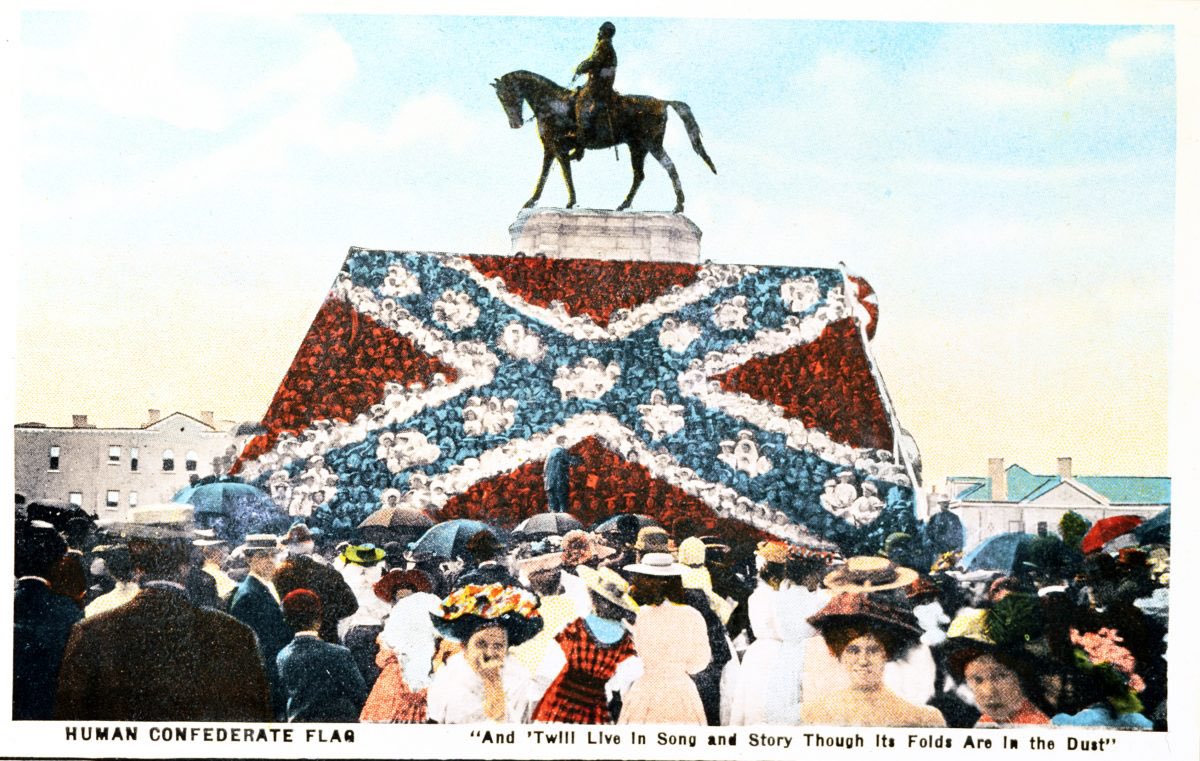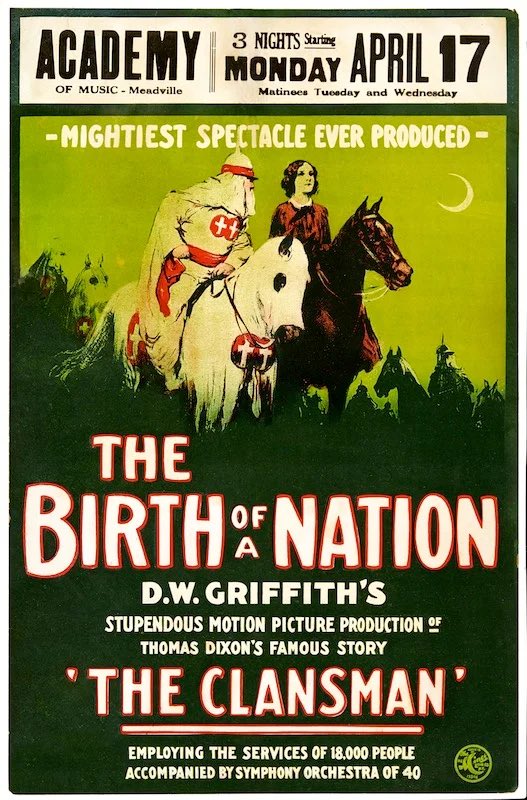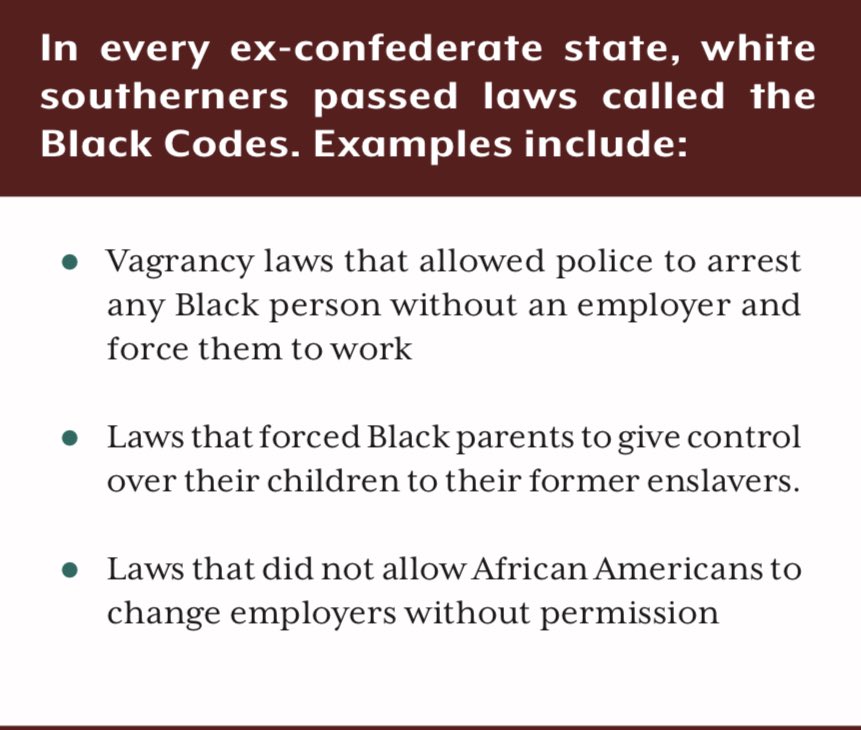
The Rise of the Lost Cause Myth (across U.S. + California):
“After Reconstruction ended, white southerners created the myth of the Confederate “Lost Cause” in order to downplay the horrors of enslavement and terrorize African Americans.”
#Reparations #ReparationsNow
(🧵⤵️)
“After Reconstruction ended, white southerners created the myth of the Confederate “Lost Cause” in order to downplay the horrors of enslavement and terrorize African Americans.”
#Reparations #ReparationsNow
(🧵⤵️)

“Southerners who opposed Black civil rights falsely argued that the Civil War had little to do with enslavement.
The Lost Cause myth claims that the Confederacy had fought a heroic war to save the southern way of life from being destroyed by the North.”
#ReparationsNow
The Lost Cause myth claims that the Confederacy had fought a heroic war to save the southern way of life from being destroyed by the North.”
#ReparationsNow

“This untruthful history also claims that the Confederacy lost the Civil War only because the more populated, industrialized North overpowered white southerners, not because enslavement or the Confederate cause was wrong.”
#Reparations #ReparationsNow
#Reparations #ReparationsNow
“The Lost Cause is not just a story that white southerners tell.
It is a weapon of terror against African Americans and a rejection of the southern defeat in the Civil War and Black civil rights.”
#Reparations #ReparationsNow
It is a weapon of terror against African Americans and a rejection of the southern defeat in the Civil War and Black civil rights.”
#Reparations #ReparationsNow
“At the end of the 1800s and the start of the 1900s, white southerners began building thousands of monuments and statues all over the South to celebrate famous Confederates, and to name important buildings after Confederate figures.”
#Reparations #ReparationsNow
#Reparations #ReparationsNow

“In the 1910s, the Ku Klux Klan, which the federal government had broken up during Reconstruction, re-emerged and began terrorizing and murdering African Americans.”
#Reparations #ReparationsNow
#Reparations #ReparationsNow

“The combination of violence against African Americans and the constant sight of monuments celebrating the enslaving Confederacy were terrorist tactics meant to silence African Americans and keep them from challenging white supremacy.”
#Reparations #ReparationsNow
#Reparations #ReparationsNow

“Lost Cause symbols became especially important to white southerners who tried to stop the Civil Rights Movement in the 1950s and 1960s.
White southerners who opposed African American civil and human rights beat and murdered Black (and some white) civil rights activists.”
White southerners who opposed African American civil and human rights beat and murdered Black (and some white) civil rights activists.”

“They also began regularly flying versions of the battle flag of the Army of Northern Virginia (the Confederate “Stars and Bars,” popularly known as the “Confederate Flag”) to threaten civil rights activists and to show that they were determined not to give equality…” 

“Even though defenders of the Lost Cause have argued that Confederate monuments and flags stand for “heritage, not hate,” and they claim that removing them erases history, this argument ignores the true history of these objects.”
#Reparations #ReparationsNow
#Reparations #ReparationsNow

“White southerners have used them [lost cause symbols] strategically as symbols of terror to try and keep African Americans from fighting for full equality.”
#Reparations #ReparationsNow
#Reparations #ReparationsNow
“In California, white Americans popularized the Lost Cause mythology with national audiences.”
#Reparations #ReparationsNow
#Reparations #ReparationsNow

“The Hollywood film industry was responsible for bringing the Lost Cause to movie screens and making it popular with many white Americans, North and South, during the first half of the 1900s.”
#Reparations #ReparationsNow
#Reparations #ReparationsNow
“D.W. Griffith’s blockbuster film, The Birth of a Nation (1915), falsely showed members of the Ku Klux Klan as heroes who were protecting white women and southern honor against violent African Americans (mostly played by white actors who painted their faces black).” 

“This film was the main factor behind the revival of the KKK in the early 1900s. Gone with Wind (1939) celebrated the pre-Civil War South by showing a world of kindly enslavers, loyal and happy enslaved people, and heroic Confederates fighting for the southern way of life.”
“White Californians also built Confederate monuments across the state.
For example, a plaque honoring Confederate President Jefferson Davis, set up by the United Daughters of the Confederacy, stood along a Bakersfield, California, highway for almost 80 years.”
#ReparationsNow
For example, a plaque honoring Confederate President Jefferson Davis, set up by the United Daughters of the Confederacy, stood along a Bakersfield, California, highway for almost 80 years.”
#ReparationsNow
“A monument in the Hollywood Forever Cemetery in Los Angeles, California, built in 1925, celebrated all Confederates who died on the Pacific Coast.”
#Reparations #ReparationsNow
#Reparations #ReparationsNow

“Although both of these monuments have now been removed, their existence reminds us of California’s complicity in the United States’ long history of enslavement, white supremacist terrorism, and systemic racism against African Americans.”
More: Oag.ca.gov/ab3121/reports
(End🧵)
More: Oag.ca.gov/ab3121/reports
(End🧵)
• • •
Missing some Tweet in this thread? You can try to
force a refresh



















